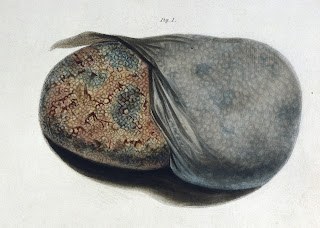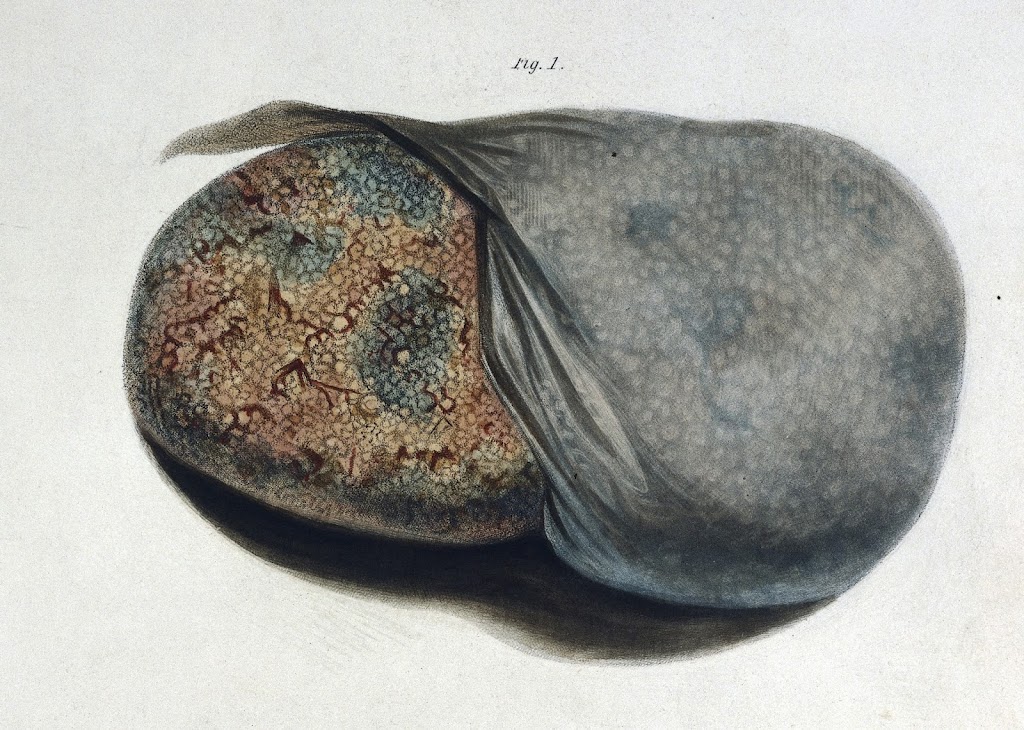Nephrology is born, 1827
 |
| Fig 1 from Bright 1827. (Wellcome Images) |
Richard Bright (1789-1858), is widely regarded as the founder of the specialty of nephrology. He gave his name to Bright’s disease, which was used for over 100 years first as a term for any type of kidney disease, and later particularly for glomerular diseases.
His ‘Reports of Medical Cases’ (1827) was the first to pull together and characterise the features and consequences of kidney disease. Key observations were its association with dropsy (severe generalised oedema), and with proteinuria and nephrotic syndrome.
We have, therefore (in dropsy), an example of the blood exhibiting a very great deficiency of albumin at the same time that we observe the mode in which it passes off from the system by means of the kidney. (Bright 1827, in work done with physician/chemist John Bostock)
It was still a relatively recent discovery that dropsy was not a disease itself, but it had already been recognised that it could be caused by heart or liver disease.
The impact of his work was remarkable. His observations were quickly repeated in several centres and widely extended over the next decade. His Reports remains one of the classics of medical literature.
Soon doctors everywhere were enthusiastically testing urine for protein – it was one of the first available diagnostic tests – usually assuming grave implications from the finding. However Christisson in Edinburgh observed patients with proteinuria who recovered, while Pierre Rayer in Paris microscoped urine and linked haematuria with acute nephritis in 1837-8.
Bright noted the association of cardiac hypertrophy with kidney disease, but the concept of blood pressure only emerged at the end of the 19th century as instruments to measure it were developed, notably at Guy’s by Frederick Akbar Mahomed.
Several pathologists have re-examined tissue from the kidneys he examined and recognised diseases such as amyloidosis, MPGN, although it was to be a long time before different conditions could be separated out pathologically. Bowman and Ludwig only described the nephron in 1840. Even 100 years later, we recognise only a few of the terms used by Arthur Ellis summarising progress over the preceding century in his review of Bright’s Disease (1942).
After studying Medicine in Edinburgh 1808-10 Bright went to Guy’s Hospital, a destination for many Edinburgh graduates seeking the best clinical experience, returning to obtain his MD in 1813. He interrrupted his studies with published expeditions to Iceland in 1810 and Austria and Hungary after graduating. He entered medical practice in London, and working at Guy’s from 1820 undertook post mortems on all those dying under his care, becoming interested in kidney diseases.
After the success of his investigations in 1842 he took over a whole ward at Guy’s for his work on kidney diseases, with an associated laboratory, possibly the world’s first renal unit.
Authors of this post were Stewart Cameron and Neil Turner.
Further Reading
Bright R 1827 Reports of Medical Cases, Selected with a View of Illustrating the Symptoms and Cure of Diseases by a Reference to Morbid Anatomy. London: Richard Taylor for Longman, Rees, Orme, Brown, and Green. [Digitised at the Internet Archive].
Ellis A 1942. Natural history of Bright’s Disease III. Lancet i 72-6
Richard Bright MD: Father of nephrology – Excellent resource from the Eskind Biomedical Library at Vanderbilt, with pages on his travels and life as well as his science.
Acute nephritis in 1875: 50 years after Bright (historyofnephrology)
Bright’s disease 100y after Bright (historyofnephrology)
